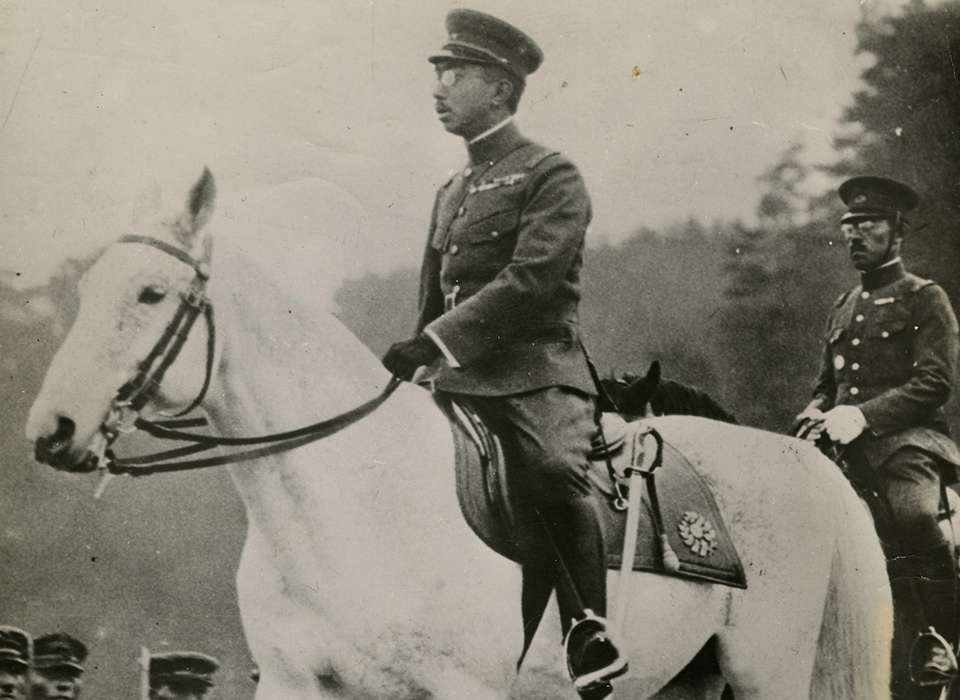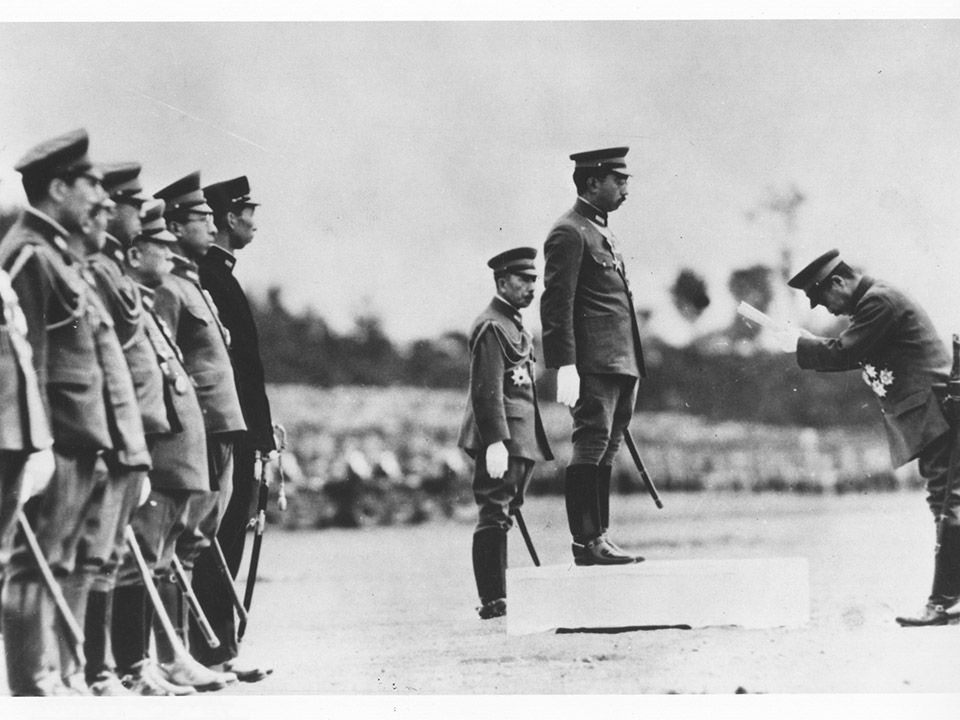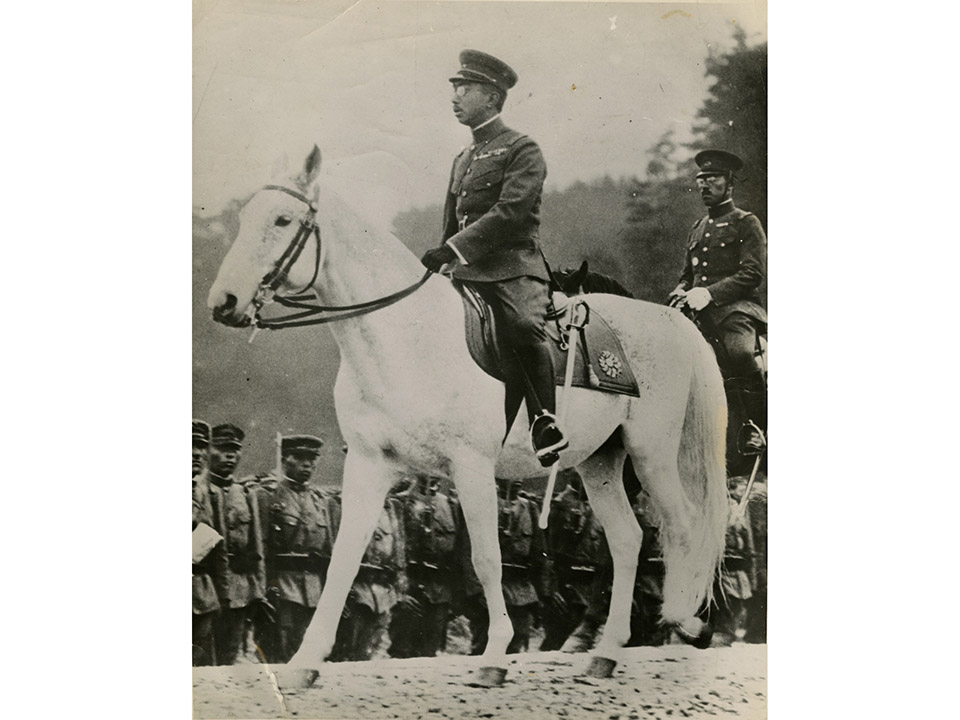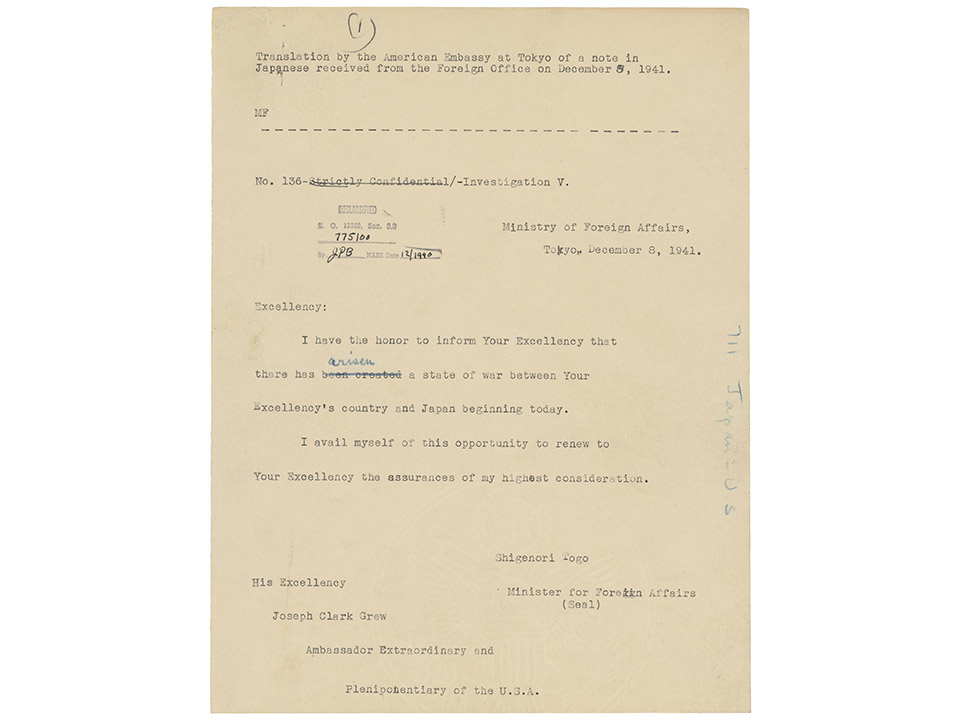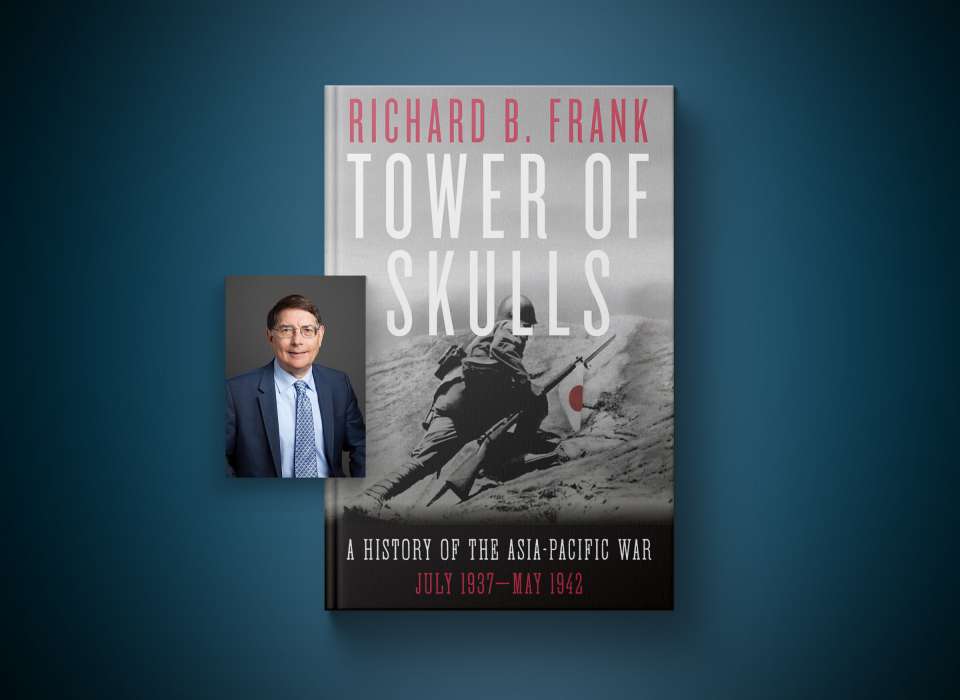Top Photo: Emperor Hirohito. The National WWII Museum, Gift of Dylan Utley, 2012.019.721
The starting point for understanding Japan’s surrender in 1945 is to recognize it required two separate and equally vital steps. First, someone with legitimate authority had to make the political decision that Japan would capitulate. Second, Japan’s armed forces had to comply with the government’s surrender. Given the incredible history of defiance of government authority by Japan’s armed forces for at least the 15 years prior to 1945, not only American but also Japanese leaders including the emperor, understood that a surrender order by the government, even one from the emperor, might not secure compliance by the armed forces.
Emperor Hirohito meets War Minister Hideki Tojo, October 1941. Courtesy National Archives.
Emperor Hirohito’s path to making that political decision was scarcely straight. Through May 1945, he believed a major Japanese military victory must precede any move toward peace, or Japan’s hopes for something other than unconditional surrender would be vain. He thus urged that Japan should launch a new offensive in China. This was spurned by his military paladins—yet another signal the armed forces recognized no master.
Marquis Kido, Hirohito’s principal adviser, presented to him a memorandum proposing a path to peace in June 1945. Rejecting any direct approach to the United States, Kido urged a negotiated settlement achieved by Soviet mediation. As for settlement terms, Kido’s conjured up a copy of the Treaty of Versailles. Japan might have to give up her overseas conquests and endure a period of disarmament. But there would be no occupation of Japanese soil, thus assuring continuance of the imperial system and Hirohito’s seat on the throne. In view of Germany’s renewed war after the Treaty of Versailles, there is zero chance US leaders would have accepted that framework to end the war.
Based on Kido’s memorandum, the emperor met with the inner cabinet, termed the Big Six for its membership. He secured their agreement to approach the Soviets. As noted in another part of this series, this effort remained stillborn.
Emperor Hirohito. The National WWII Museum, Gift of Dylan Utley, 2012.019.721
Prior to the atomic bombing of Hiroshima, Hirohito failed to intervene as the Soviet mediation effort went nowhere. Explanation for his inaction probably reflects three strands. Except for one extraordinary situation in 1936 when he moved forcefully to demand suppression of a military mutiny in Tokyo, Hirohito avoided any attempt to rule Japan directly. A second reason was Ketsu Go: the planned Armageddon battle on Kyushu to turn the military situation to Japan’s favor. Only gradually into July reports reaching the emperor raised his doubts about its likelihood of its success.
On the other hand, as the summer progressed, the emperor and other key members of the inner leadership experienced truly terrifying anxiety that the Japanese people were nearing a revolutionary moment. This was primarily because of the American campaign of devastating fire-bombing attacks on cities, and the increasingly dire food situation. “The domestic situation” became the euphemism these elite leaders employed to mask their real fear. They projected the real crisis would come in the fall, particularly when the rice crop was due.
Tokyo received news of a devastating but mysterious event in Hiroshima on August 6, but only the next day learned President Truman maintained it was an atomic bomb. The reaction by Japanese armed forces to Truman’s claim is extremely important. The Imperial Army declared they would only concede it was an atomic bomb after an investigation. But the stance of the Imperial Navy was much more ominous. Top naval leaders allowed that the Americans might have used an atomic bomb, but even so, they could not possess more atomic bombs, or if they did, they would not be that powerful.
This unfazed, immediate reaction stemmed from Japan’s own atomic bomb program. It produced no actual bomb, but it educated top officials that the production of fissionable material to make an atomic bomb was stupendously difficult. Hence, these top uniformed leaders refused to concede that the United States possessed more than one bomb, or perhaps a few, but not an arsenal of powerful atomic weapons. Given this reaction, it’s obvious that a one-bomb demonstration never would have convinced Japanese leaders to capitulate. The one thing the news of Hiroshima did do was to provide the warrant for a meeting of the Big Six. But military members forced postponement of the meeting to the morning of August 9.
Foreign Minister Togo was there at the beginning and the end. This is the letter from Togo to the American Ambassador to Japan Joseph Grew, informing the ambassador that Japan had declared war on the United States. Courtesy National Archives.
Meanwhile in the afternoon of August 8, before the entry of the Soviet Union into the war or the bombing of Nagasaki, the emperor met with Foreign Minister Shigenori Togo. Shortly after the war, Togo affirmed that the emperor stated the war must end at this meeting. New evidence now confirms Togo’s account that it was the atomic bomb that moved the emperor to decide to end the war.
But this did not mean the war assuredly would end because it remained very uncertain that Japan’s armed forces would comply even with the emperor’s order.
Meet the Author
Richard B. Frank is an internationally renowned expert on the Pacific war. After graduating from the University of Missouri, he was commissioned in the US Army, in which he served for nearly four years, including a tour of duty in the Republic of Vietnam as an aero rifle platoon leader with the 101st Airborne Division.
Frank completed studies at Georgetown University Law Center in Washington, DC. Soon afterwards he began research on his first book, Guadalcanal: The Definitive Account of the Landmark Battle, which was published in 1990 and won the US Marine Corps’ General Wallace M. Greene Award.
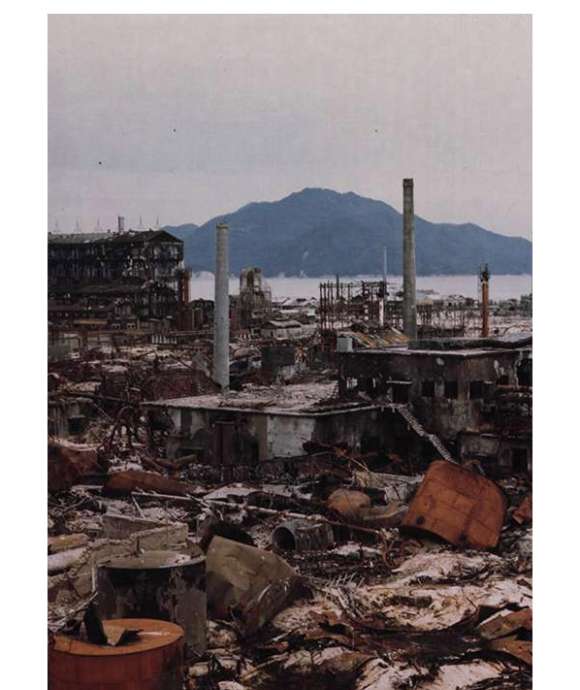
"To Bear the Unbearable": Japan's Surrender, Part II
Although a decision to continue the war would mean national suicide, members of the Japanese military came close to refusing Emperor Hirohito’s surrender order.
Cite this article:
MLA Citation:
APA Citation:
Chicago Style Citation:
